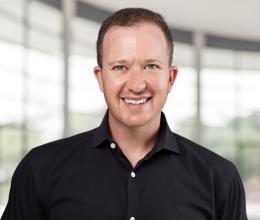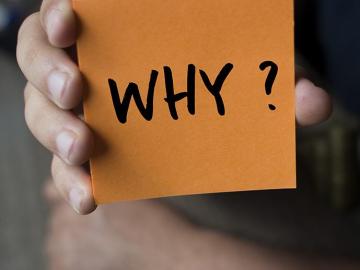
The Value of Purpose
Have you ever stopped to ask yourself what exactly you’re working for? Unfortunately, many people don’t give this question much thought as they focus solely on their immediate wants or needs (i.e., financial stability, status, and so forth). However, when we seriously consider this question from a perspective that goes beyond our extrinsic desires, we may discover effective ways to create a positive impact by redirecting our focus—revealing a true sense of purpose.
Establishing a sense of purpose—or finding our ‘why’—is necessary to sustain our drive to affect change. When we are inspired by something we find meaningful, obstacles that might typically feel overwhelming seem more manageable, and the often-complex process of transformation easier to navigate. Our change process becomes more thoughtful, focused, and effective when there’s a clear sense of purpose, keeping us energized and on track.
Uncovering Your Personal Why
So—what is your why?
Many people find that they struggle to identify their why. They often can’t separate their values from those of their peers or have many things they feel strongly about and don’t know how to narrow them down. Often, people try to reverse engineer their why by describing it in the context of their current situation rather than admit they might not yet feel a real sense of purpose.
When it comes down to it, most people simply haven’t spent enough time exploring their deeply held values. Or it’s been a while since they have—and things changed. If you find yourself in a similar boat, the following steps can help you identify what you find important and create a “why’ statement” by which you can live.
1. Start with a Powerful Question
Ask yourself one or more powerful questions, such as:
- What makes me feel fulfilled?
- What am I doing when I’m feeling my best?
- What do I want to change about the world?
- What do I want to leave behind?
- What makes life worth living for me?
- What has been my biggest challenge so far?
Be sure to approach each question thoughtfully and answer it genuinely. This way, you are more likely to gain real insight into your desires.
2. Get to the Deeper Why
Once you answer a question, don’t stop there, go deeper. With each answer, drill down further by asking why. You can ask it several times to get more nuanced or illuminating answers.
Example: What makes me feel fulfilled?
Answer: Helping kids
- Why?: Because I care about their livelihood.
- Why?: Because I don’t want anyone else to go through what I did as a kid.
- Why?: Because everyone deserves a happy childhood.
- Why?: Because children should be cared for and protected.
- Why?: Because they are innocent, and innocence is rare in today’s world.
Tip: Anytime ‘why?’ doesn’t feel like the right question, you can also ask ‘why is this important?’.
3. Identify Your Core Values
Now that you have drilled down and have several deeper answers to your initial question, you'll also want to identify the values in your answers. If we use the example above—we might identify compassion, protecting the vulnerable, and innocence as some core values.
You can also simply read through a list of values and highlight those that resonate with you the most. If possible, narrow it down to your top three. For example: creativity, freedom, and travel—or—knowledge, achievement, and justice.
4. Create your Why Statement
Now that you have answered a few powerful questions and identified your values, you can channel all of this into your why statement. This statement will be uniquely yours and represents your core values.
Example Why Statement:
“I am dedicated to making a difference in other people’s lives and protecting the most vulnerable and innocent among us. Because I experienced a difficult childhood, I will ensure that other children don’t have to go through what I did and that those in a similar position to mine get the help they need.”
Examples of Why in Action
Josh was drawn to art his whole life. As a child, he valued his time alone imagining and painting new worlds. After a difficult bout with depression during his young adult years, he came through and eventually reconnected with his art. Josh valued creativity and appreciated the power of therapy to help people through difficult times. Recognizing the intersection of these values, he began studying art therapy and eventually created successful programs that help people use their artistic expression to process difficult emotions.
Josh turned his past challenges and a desire to help others into his sense of purpose. But we don’t necessarily need to have gone through dark times to find a sense of purpose. In addition, not every sense of purpose is one that directly helps people in need. Rather, it might be used to inspire, inform, or entertain.
Take Justine. She’s always been driven by a sense of adventure, and she values exploring foreign regions, cultures, customs, and history. Troubled by the lack of interest by her peers in worldly affairs existing outside their own bubbles, she decided that she would create a travel vlog to educate others and inspire them to get out and see more of the world.
The Collective Why
Discovering and understanding our personal why is an important process that allows us to make better personal and professional decisions that align with our values. However, the collective why is just as important for organizations since the shared values of a group reflect their identity and what's important to them. An organization’s purpose might be rooted in the very work they do (like in the case of most non-profits), speak to how an organization wants to operate or describe the overall impact it hopes to make.
Below are some examples of purpose statements where you can easily identify each organization’s core values.
- CarMax: To drive integrity by being honest & transparent in every interaction.
- Eli Lilly: Lilly unites caring with discovery to create medicines that make life better for people around the world.
- Mastercard: We work to connect and power an inclusive digital economy that benefits everyone, everywhere by making transactions safe, simple, smart, and accessible; Connecting everyone to Priceless possibilities.
- Starbucks: As it has been from the beginning, our purpose goes far beyond profit. We believe in the pursuit of doing good.
Purpose statements can help organizations stay on track and maintain a sense of direction even in challenging times. However, in order to fulfill its role, it’s critical that the purpose statement is an active part of the organization’s culture and informs its policies and operations.
Remaining Flexible
One could liken the practice of establishing a strong why statement to programming a destination into a GPS. Although reaching a specific destination isn’t the ultimate goal of a purpose-driven life, we find that our purpose helps to keep us going in the right direction, despite the multiple routes we could take to get there. This entails remaining open to the myriad ways we might express our why, knowing that it’s not necessarily a specific career or hobby that we must engage in to feel like we’re living our purpose, but rather any combination of activities that align with our core values.
In addition to opening us up to the variety of ways our purpose can be expressed, a strong why statement can also help us eliminate the distraction of opportunities that don’t align with our purpose. Of course, even with a strong sense of purpose, we can still get distracted by ideas that seem important or urgent but pull us away from our why. When this happens, it’s important to understand that this is not a failure; it’s just a side trip. With every experience, there is always something to learn. And when we can come back to our purpose, it’s often with newfound inspiration and energy. In this way, the distraction also serves as a reminder of just how different it feels to live with a sense of purpose versus how it feels when we don’t.
Keep in mind that our why statements may change over time. We are always adapting, learning, and recognizing new parts of ourselves. The world is complex and ever-evolving. So why wouldn’t that also apply to what drives us and what we ultimately find meaningful in life? It’s important to revisit your values and why statement from time to time. And, if you’ve never given it much thought—or it’s been a while since you have—why not take some time now to ask yourself the magic question: “What is my why?”
Dive Deeper
Take a deep-dive into this topic and gain expert, working knowledge by joining us for the program that inspired it!
The Berkeley Changemaker Program
Learn the importance of visionary leadership, how to find sources of purpose, and how both impact your ability to effectively lead change.
Learn more


